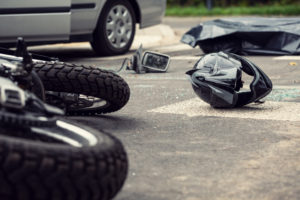“Ford accepted the risk that somebody might die in a rollover, and I ask you to hold Ford responsible for accepting that risk.” This was the plaintiff attorney’s plea to the jury during their trial against Ford Motor Company in Seminole County which lasted almost two weeks.
Plaintiffs, the Parker family, filed suit against Action Gator Tires, Cooper Tire, and Ford Motor Company in 2011. On June 21, 2010, Katie Parker was traveling northbound on Interstate 95 from Vero Beach to visit her mother who lived in Sanford. While driving, Katie’s back left tire “peeled away” and the vehicle veered into a guard rail and subsequently flipped multiple times before she was ultimately ejected from the vehicle causing her death. Katie was 19-years old at the time of the accident.
In a product liability suit, such as the Parker case, which will be discussed in more detail below, in order to prevail Florida law requires the plaintiff to establish:
- The manufacturer’s relationship to the product in question;
- The defect and unreasonably dangerous condition of the product; and
- The existence of the proximate causal connection between such dangerous condition and the plaintiff’s injuries or damages.
Additionally, it is important to decide which parties involved in the chain of distribution, i.e., the path the product takes from manufacture to distribution to consumers, of the injury-causing product to include in the law suit. For example, in the Parker case, it was the strategy of the plaintiff’s attorneys to not only sue the manufacturer of the tire, as well as the company who sold and installed the tire onto Katie’s Explorer, but to also bring suit against Ford Motor Company.
Prior to the trial beginning, Action Gator Tires, the retailer that sold and installed the tire on Katie’s car, and Cooper Tire, the manufacturer of the tire, settled with the family for an undisclosed amount. Accordingly, the trial proceeded solely against Ford Motor Company.
At trial, which began on February 20, 2017, plaintiff’s attorneys showed that Katie was driving a Ford Explorer at the time of her accident arguably to establish the relationship of Ford to the crash. Additionally, they introduced reports of Ford’s own engineering department warning the company that Explorers tended to tip onto two wheels and “skate” which was likely to show that Ford was aware and knew of the design flaws and dangerous condition of the vehicle. Using this, they contended to the jury that had Ford corrected this tipping hazard the accident would not have occurred, and Katie would still be with us today.
However, the defense attorneys for Ford painted a different picture regarding the cause of the accident. They instead blamed the crash on the actual tire that “peeled” and not the design of the Explorer. Moreover, they emphasized the age and condition of the Explorer Katie was driving which was a year 2000 with over 170,000 miles on it. Additionally, they blamed Katie’s failure to have her seatbelt on at the time of the crash stating that Katie’s cause of death was determined to be blunt force trauma after being ejected from the vehicle.
Ultimately, when asked to award the Parker family $25 million in damages, the jury declined to do so. After just four hours of deliberation on Thursday, March 2, 2017, the six-person panel found Ford was not responsible for the accident and therefore owed nothing to the family.
This case is a prime example of the difficulties under the law and the importance of a sound strategy when trying a case such as this. In Florida, product liability cases are held to a strict liability standard of responsibility, meaning that the individual has a legal responsibility for damages or injury, even if the person found strictly liable was not at fault or negligent. However, juries in these types of cases are allowed to consider the comparative negligence of the plaintiff in certain circumstances. Specifically, Florida courts have held that comparative negligence can be raised as a defense in a case for design defect if based on grounds other than failing to discover or guard against a defect. The fact that Katie was not wearing her seatbelt at the time of the accident could have been a detrimental fact to the Parker’s case against Ford.
It is an unfortunate reality that a jury could completely absolve Ford of any responsibility to the Parker family even though evidence tended to show that Ford knew of the tipping danger the Explorer posed. As a firm that’s practiced for over 50 years, Wooten Kimbrough, P.A., has litigated several cases dealing with defective tires. The Parker case is a prime example of how important a thorough evaluation of the case and the firm’s strategy regarding which parties to include in a lawsuit can make a huge difference in things such as decreasing costs and maximizing the recovery for our clients in a timely fashion.

Born and raised in Rochester, Michigan, Thomas Dennis focuses on representing those who have been harmed by the negligence or wrongful conduct of others in the State of Florida. Specializing in wrongful death, medical malpractice, nursing home abuse and insurance disputes, Mr. Dennis is experienced in many areas of personal injury law.










Comments for this article are closed.